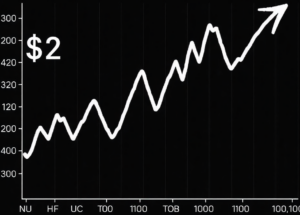
China’s inflation trends in January 2025 highlight a contrasting economic scenario, where consumer prices increased, but factory-gate prices remained weak. The Consumer Price Index (CPI) rose by 0.5% year-on-year, reflecting higher household spending, while the Producer Price Index (PPI) declined by 2.3%, continuing its downward trend.
The rise in CPI is attributed to the Spring Festival, a peak period for consumer activity. Increased spending on food, travel, and entertainment contributed to higher prices. However, the industrial sector struggled, leading to lower factory-gate prices. This indicates weak demand for raw materials and industrial goods, which could affect economic growth.
While higher CPI inflation suggests recovering consumer confidence, the declining PPI raises concerns about deflationary risks in manufacturing. If factories continue to face lower prices and reduced profitability, it could lead to slower investments and job cuts, impacting long-term growth.
This article provides a detailed analysis of China’s CPI and PPI trends in January 2025, exploring the driving factors, economic implications, and potential policy responses. A comparison with global inflation trends is also included to provide a broader perspective.
Understanding CPI Inflation in January 2025
What is CPI Inflation?
The Consumer Price Index (CPI) measures changes in the prices of goods and services commonly purchased by households. It reflects inflationary trends in the economy. When CPI rises, it indicates that consumers are paying more for goods and services, whereas a decline suggests falling prices.
In January 2025, China’s CPI rose 0.5% year-on-year, marking an increase from December’s 0.1% growth. This suggests that consumer demand strengthened, particularly during the Spring Festival period.
Key Factors Behind CPI Inflation
-
Holiday-Driven Consumer Demand
- The Lunar New Year (Spring Festival) is one of China’s busiest shopping seasons. Increased spending on food, gifts, clothing, and travel contributed to inflation.
- Retail sales surged as consumers spent more on electronics, home appliances, and entertainment.
-
Rising Food Prices
- Food prices increased, especially for pork and fresh vegetables, which saw higher demand before the holiday season.
- Harsh winter weather in northern China disrupted agricultural supply chains, further pushing prices up.
-
Higher Transportation Costs
- Millions of people traveled home for the holidays, causing a spike in airfare, train, and bus fares.
- Rising fuel prices and logistics costs added to the overall inflation pressure.
-
Increasing Costs in Services
- Entertainment, dining, and hotel prices surged as people celebrated the holidays.
- Healthcare and education services also saw moderate price increases, contributing to overall inflation.
Economic Implications of CPI Inflation
- Positive for consumer confidence: Higher CPI suggests that household spending is recovering, which supports economic growth.
- Rising cost of living: If inflation remains high, purchasing power could decline, affecting low-income households.
- Potential monetary policy changes: The Chinese government may adjust interest rates or introduce subsidies to stabilize inflation.
Weak Producer Price Index (PPI) Signals Industrial Challenges
What is PPI and Why is it Important?
The Producer Price Index (PPI) measures changes in prices that factories charge for their goods before they reach consumers. A declining PPI indicates that manufacturers are struggling to increase prices, which can signal weak demand for industrial goods.
In January 2025, China’s PPI fell by 2.3% year-on-year, following a 2.1% decline in December. This reflects continued weakness in China’s industrial sector, despite efforts to boost economic activity.
Key Reasons for Weak PPI
-
Industrial Slowdown Due to the Spring Festival
- Many factories scaled down production or closed temporarily during the Lunar New Year.
- Lower demand for industrial raw materials contributed to declining factory-gate prices.
-
Weak Global Demand for Chinese Exports
- China’s manufacturing sector continued to struggle with reduced foreign orders, particularly from Europe and the U.S.
- Global economic uncertainties and higher interest rates in key markets impacted demand for Chinese industrial goods.
-
Falling Commodity Prices
- Prices of raw materials like iron ore, coal, and crude oil remained weak, lowering costs for manufacturers.
- While this benefits factory production costs, it also means lower revenue for producers.
-
Deflationary Pressures in the Industrial Sector
- Lower factory prices could lead to reduced investment in manufacturing, potentially impacting employment and wages.
- Continued PPI declines may force the government to implement stimulus measures to support the sector.
Economic Implications of Weak PPI
- Challenges for manufacturers: Lower factory prices reduce profit margins, discouraging industrial expansion.
- Impact on employment: Weak manufacturing demand can lead to job losses and wage stagnation.
- Government intervention likely: Authorities may increase infrastructure spending or offer subsidies to support the sector.
Comparison with Global Inflation Trends
How Does China’s Inflation Compare to Other Countries?
- United States: U.S. CPI inflation stood at 3.1% in January 2025, much higher than China’s 0.5%. However, the U.S. economy faced challenges from high borrowing costs and slowing growth.
- European Union: Inflation in the Eurozone remained around 2.5%, reflecting higher energy costs and supply chain disruptions.
- Japan: Japan continued to experience low inflation of 1.2%, driven by weaker consumer spending.
China’s low consumer inflation but weak producer prices contrast with many global economies, where both consumer and producer inflation remain high.
Why This Matters for Global Markets
- China’s manufacturing sector impacts global supply chains. Weak PPI in China could mean lower export prices, benefiting global consumers.
- Deflation risks in China could affect commodity markets, leading to lower prices for metals and energy worldwide.
- China’s policy responses could influence global economic stability, especially if the government introduces monetary easing measures.
Government Policy and Future Outlook
Potential Government Measures
- Monetary policy adjustments: The People’s Bank of China (PBOC) may lower interest rates to stimulate growth.
- Infrastructure spending: Increased government investment in infrastructure could boost industrial demand.
- Consumer incentives: Policies such as tax rebates or cash subsidies could be introduced to encourage household spending.
Outlook for 2025
- CPI inflation is expected to remain moderate, with seasonal demand fluctuations playing a key role.
- PPI recovery will depend on global demand and government stimulus efforts.
- Economic stability will require a balance between consumer spending growth and industrial recovery.
China’s CPI inflation increase in January 2025 reflects strong consumer demand, while the PPI decline signals industrial challenges. The Spring Festival boosted household spending, but factories continued to struggle with falling export demand and weak commodity prices.
The Chinese government is expected to implement economic policies to support manufacturing and consumer sectors. Global investors and businesses will closely monitor these trends, as China’s economic trajectory remains crucial for world markets.
Understanding China’s inflation dynamics is essential for policymakers, businesses, and investors, as these trends shape economic growth, trade, and global supply chains in 2025 and beyond.
Feel free to check out our other website at : https://synergypublish.com

